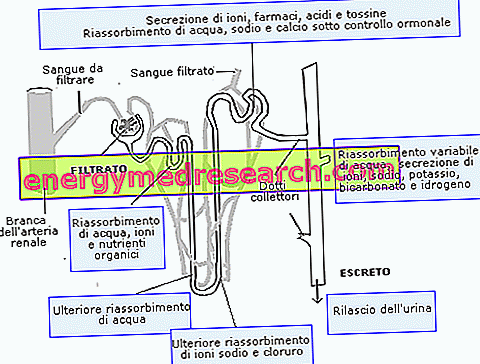Generality
Elastases are pancreatic enzymes that hydrolyse (digest) elastin, a protein characteristic of connective tissues, such as the skin, blood vessels and lungs, to which it gives a certain elasticity.
The elastase assay, in particular of elastase 1 (EL1), in the faeces is a recently introduced test, useful for evaluating the insufficiency of the exocrine secretion of the pancreas .
Pancreatic Elastase
Human pancreatic elastase (EL1) is a proteolytic enzyme, a 240-amino acid glycoprotein, with a molecular weight of about 26 kDa, synthesized by the pancreatic acinar cells.
Elastase-1, which constitutes 6% of pancreatic juice, is concentrated at the fecal level, where its concentration is about 5-6 times higher than that of duodenal pancreatic juice.
Among the most important features in the clinical setting, elastase-1 - unlike other pancreatic enzymes such as chymotrypsin - is not significantly degraded during intestinal transit, where it is mainly bound to bile salts; consequently, its concentration in the faeces reflects well the functional state of the exocrine pancreas.
In addition to bile acids, fecal elastase - thanks to its extremely high stability - also binds to neutral sterols, which allows it to convey cholesterol and its metabolites during intestinal transit.
How and why it is measured
The determination of faecal Elastase-1 occurs by an enzyme immunoassay (ELISA test) on a small stool sample.
Compared to the other laboratory parameters used in pancreatic diagnostics (amylase and serum lipase activity, useful for the diagnosis of acute pancreatitis) and the activity of chymotrypsin in faeces (for the diagnosis of pancreatic exocrine insufficiency), E1 determination has several advantages: simplicity, non-invasiveness, high sensitivity and specificity, poor variability, independence from gastrointestinal diseases and concomitant replacement therapy. Indeed:
- E1 is absolutely pancreas-specific (it is not produced by other organs);
- E1 is not degraded during intestinal transit, so its concentration in the faeces reflects the secretory capacity of the pancreas;
- E1 has a superior half-life compared to amylase and lipase;
- enzyme replacement therapy does not affect E1 measurement;
- the intra-individual variation of faecal concentrations of E1 is low;
- the determination of E1 correlates well with the gold standard examination, that is with the invasive direct examinations of secretin-pancreozimina and with that of secretin-ceruleine.
The dosage of elastase-1 in faeces is configured as a non-invasive, sensitive, specific, economic instrument with a good degree of accuracy to diagnose pancreatic insufficiency.
Unlike the measure of fecal B chymotrypsin, moderate pancreatic insufficiency can also be diagnosed by E1 determination in faeces.
Normal values
The concentration of elastase-1 in faeces is now widely used to diagnose pancreatic insufficiency .
A concentration of over 200 micrograms per gram of faeces (200-500 mcg / g) is considered normal.
Causes of Low Elastase
Low faecal elastase-1 values may indicate the presence of pancreatic insufficiency:
- of mild and moderate grade for fecal E1 values between 100 and 200 mcg / g
- severe grade for fecal E1 values less than 100 mcg / g
In patients with cystic fibrosis, severe pancreatic insufficiency, characterized by steatorrhea, is accompanied by elastase-1 values very close to zero.
Low values of fecal elastase are also recorded in the presence of diabetes mellitus (type I and II), osteoporosis, inflammatory bowel disease (Crohn's disease, ulcerative colitis), celiac disease, cholelithiasis, AIDS, and chronic renal failure.
The values of elastase-1 in faeces may appear to be falsely decreased when measured in the presence of diarrhea, intestinal inflammation or enteropathies; in these cases, low EL-1 values may be independent of true pancreatic insufficiency.



